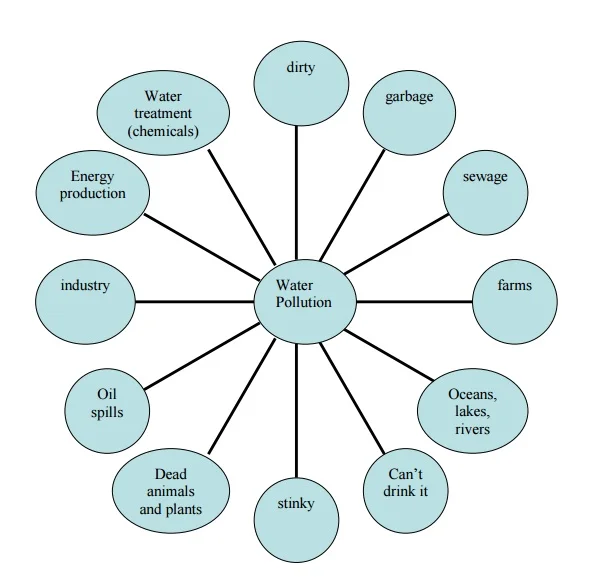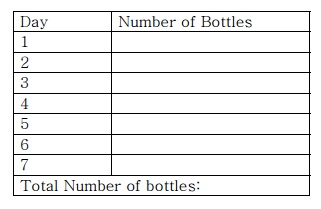Grades 5-12 (Science and Social studies)
Topic: What is water pollution?
Time: 60 minutes
Space Requirement: Regular classroom
Methodology: Concept map development, cooperative learning
Materials: computer and projector
Objectives: The students will develop a definition of water pollution that will be used for this series of lessons. The students will also see pictures of water pollution and begin to develop an idea of the causes and sources of water pollution.
Directions/Procedure:
On the board write “Water Pollution”.
Ask each student in turn to give a word or phrase that relates to water pollution and write their responses attached to the central term. (5 min)
When every student has given one answer, go through the answers and make links between statements and add new statements as they come up. (5 min)
Ask the students if they have ever seen examples of water pollution. Have them give details like location, type of water body, type of pollution, did they tell someone about it/make an effort to clean it up? (5 min)
Play the slide show of pictures of water pollution (see Resources). There are questions to ask the students for every picture. (40 min)
For homework ask the students to write down possible causes of water pollution to bring to class the next day.
Start a counting project with the students. Have the students count the number of plastic water bottles (other than re-usable water bottles like Nalgene™ bottles) they use or see around the school, home and community. They are to record that number in the chart (see Resources) for use in a later lesson (5 min)
Evaluation: Students can be evaluated on the level of participation for this class. Each student must participate at least once.
For the Teacher: The power point presentation is a slide show of pictures. It is recommended that the teacher print out the presentation as individual slides so that the questions for each picture are available and can be read to the class. Also, rather than waste paper printing the water bottle chart, have the students copy the chart on to a separate piece of paper and remind the students every day to count the water bottles they see and put that information into their chart.
Related Links:
Resources: Water Pollution Presentation. Questions for Water Pollution Presentation. A sample concept map and the water bottle chart are available below.
Extension Activity: The Safe Drinking Water Foundation has other educational programs that can be taught with this set of lessons. Operation Water Drop looks at what chemical contaminants there are in water and is designed for a science class. Operation Water Flow looks at how water is used and where it comes from and is designed for a Social studies and Math collaboration. Operation Water Spirit presents a First Nations perspective of water and water issues and is designed for a Native Studies class. Operation Water Health looks at common health issues surrounding drinking water in Canada and around the world and is designed for a Health, Science and Social Studies collaboration. To access more information on these and other educational activities visit the Safe Drinking Water Foundation website at www.safewater.org.
Source: http://www.grinningplanet.com/2005/07-26/water-pollution-facts-article.htm
Sample Concept Map
Water Bottle Chart



